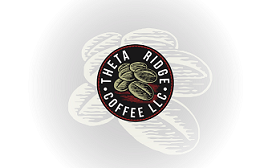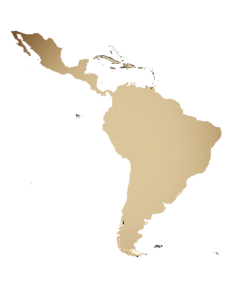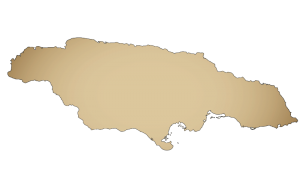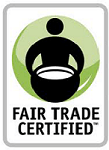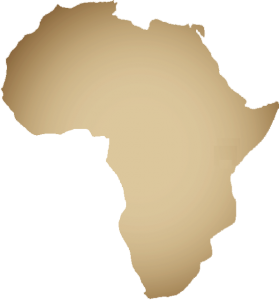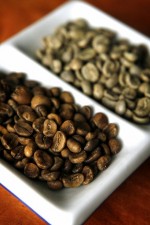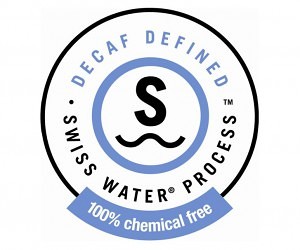Theta Ridge Green Coffee
We are dedicated to bringing you the finest quality green coffee from around the world!Purchase Green Coffee from Around the World
Regions
Countries
Varieties
Importing the Finest Green Coffee
Theta Ridge Green Coffee is hand selected by owner and coffee expert, Kevin Kuyers. Kevin travels to each farm to inspect the farming technique, conditions, and crop. He speaks personally to the growers and samples the newest product in exclusive cuppings. This insures that the beans that you order from Theta Ridge arrive fresh and of the finest quality available. Theta Ridge also features exclusive, limited edition, beans for the most discerning connoisseur. These beans are grown in exclusive plots and chosen for their unique flavor. Due to their influence and ties to the coffee world, Theta Ridge is able to bring these small batch and exclusive beans half way around the world to your very own cup. Theta Ridge is truly your bridge to the world of fine coffee. Learn more by exploring our current green coffee varieties.
Central & South America
Central America is generally known for growing coffee with smooth flavors that are not too bitter, nor too acid. These beans are known for their chocolaty or spicy tones. Probably the best known Central American producers are Guatemala and Costa Rica. With three main growing regions and Micro climates that influence quality and flavor, Guatemala is best known for its medium to full bodied coffee. Further south, Costa Rican coffees are often described as having the perfect balance of body, with a sharp acidity. They are grown on small farms and processed using the wet method.
South America has probably had the most impact on the coffee palate in the United States. Containing the world’s first and second largest growers of the coffee plant, many of these varieties make it to cups in Northern America. These coffees are mainly grown in Colombia and Brazil. Both of these maintain a high standard of excellence and a great national pride for their product. The coffees from Columbia are mainly mild with a well-balanced acidity while the coffees of Brazil have a sweet tone, medium-body, and low acidity.
The Islands
The islands of the Caribbean and the big island of Hawaii boast some of the most gourmet coffee beans available. Jamaica has been the home of premium coffee beans since the late 1700’s. Since then, the ideal growing conditions have produced a coffee that is now certified by the Jamaican Coffee Industry Board as 100% Jamaican Blu Mountain. The Galapagos farm of “El Cafetal” is certified organic and use the “under shade” method to control pests without chemicals. These beans are run through a series of quality test were only the ones that pass stringent standards go into their balanced offerings. Half a world away, the island of Hawaii hosts the famous Kona region. This dark volcanic lava rock area on the west coast of the island provides just the right mixture of rich soil, sun, and rain. Picked by hand, Kona coffees have been a premium product dating back to the 1800’s. Here coffee farmers cultivate a crop of Kona coffee on small parcels of land no bigger than 12 acres. Many of these farms are family concerns and have been passed down through generations.
Asia, Indonesia, and Pacific Region
Known for their smooth flavors, coffees from this region tend to be moderate in acidity and full-bodied. Arguably the most recognizable name in the coffee world, Java coffee hales from a small volcano-dotted island in the heart of Indonesia. Thanks to the Dutch who introduced coffee to this region of the world in the 1600’s, Java now is the home to large coffee estates. Four hours to the west, is the west-central region of Padang. The coffee produced here is smooth with a heavy body. Though sometimes described as syrupy, Sumatra Mandheling coffee exhibits sweet tones of chocolate and sometimes hints of licorice.
What is Fair Trade?
Fair Trade Organizations create trading partnerships with the goal of respecting people and the environment. Many small scale coffee farmers live in remote locations with limited access to credit and other resources. This leaves them vulnerable to those who would underpay for a valuable crop. Fair Trade guarantees farmers a fair, minimum price for their goods. Founded in 1988, The Fair Trade Certification was created in reaction to a coffee crisis where supply was greater than demand and the price dropped so low that the small scale farms could no longer sustain themselves. Today Certified Fair Trade coffee is mostly exported by tertiary cooperatives that market the coffee on behalf of the local cooperatives to which the farmers belong.
Africa
Africa is the home of the original Arabica coffee. The continent is known for its Yirgacheffe, Sidamo and Harar Arabica varieties. These are considered by some to the be the world’s most exquisite. Coffees from Africa tend to have a fruity or sweet undertone. These notes can range from blueberry to citrus. Mainly full-bodied, these coffees are grown at an altitude ranging from four to seven thousand feet above sea level. One particular coffee from the country of Tanzania is unique in that the cherry of the plant has only a single bean. Most coffee varieties have two beans per cherry. This single round bean produces what many believe to be an enhanced flavor.
Decaffeinated Coffee
Friedlieb Ferdinand Runge was the first person to successfully isolate naturally occurring caffeine from the coffee bean in 1820. Though he discovered the process. He did not attempt to use it commercially to produce decaffeinated beans. Nearly 100 years later, a German Merchant named Ludwig Roselius would pick up where Runge left off. As will many successful ideas, his was born out of what appeared to be a disaster. A shipment of Roselius’ beans became soaked in sea water and lost much of their caffeine content yet still maintained much of their taste. The German would go out to patent a process in 1906 that involved steaming the beans with various acids and them washing them in Benzene. Today we know that Benzene is a carcinogen, so it is no longer used. However, the process has remained much the same.
Swiss Water Process
The Swiss Water Process is a method of extracting naturally occurring caffeine from beans without the use of chemicals. Instead, the process uses the scientific processes of solubility and osmosis to draw out the caffeine compound from the beans. The process starts with a batch of green coffee beans soaked in near boiling water. This bath dissolves the water soluble caffeine molecules. This water is then drawn off the beans and run through a filter made of activated charcoal. This filter captures the larger caffeine molecules while letting the other oils and flavor molecules from the soaked beans run through and back into the water. The result of this step is a bath of water full of oils and flavor without caffeine. Unfortunately, the soaked beans are now devoid of most of the nearly 100 different chemicals that give the coffee its rich and unique flavor. These beans are then discarded and a fresh batch of beans are added to the water bath of oils and flavor. At this stage, the caffeine molecules are again drawn into the water. This time, because the solution is already saturated with oils and flavors from the previous batch of beans the process leaves much of the flavor of this second batch of beans intact. This process is repeated until the beans are 99.9% free of caffeine. The entire process takes between eight and ten hours.
Frequently Asked Questions?
What is Green Coffee? Green coffee is simply the seed of the coffee plant. Inside the fruit of the plant, known as the cherry are two seeds. These are processed, roasted, and brewed for your morning cup of Jo. It is unknown when the seed became known as a bean. It is though to have started due to its resemblance to actual beans.
What is Coffee Roasting? Coffee beans in their green form have very little of the flavor that we have come to love in our coffee drink. These flavors that we enjoy are the result of a chemical process that happens when the beans are heated for a period of time at around 400 degrees Fahrenheit. The heating process creates, balances, and in some instances, alters the chemical makeup of the bean to produce the flavor, acidity, and body of the coffee.
Why Roast My Own Coffee? Home roasting can be a fun DIY project. The process is straight forward and can be accomplished with minimal tools. Producing your own roast can be a sense of pride. Taking a raw product and creating something delicious can be as satisfying as creating a gourmet meal or fashioning a piece of furniture from raw wood. Since roasted beans begin to lose their freshness after just a few days, home roasting ensures the you will always have the freshest coffee available. Finally, green coffee is a bargain. Buying green coffee beans in bulk can save between 50 and 70% over store purchased packages.
Where Does Coffee Come From? The coffee plant is grown all over the world in regions close to the equator. The perfect mix of altitude, soil, climate, rain, and sun make many of the countries in Central and South America, Africa, and Indonesia the ideal place to grow coffee. Many of the farms are smaller than 25 acres and family run for generations.
